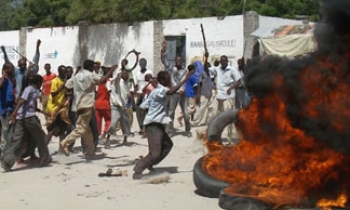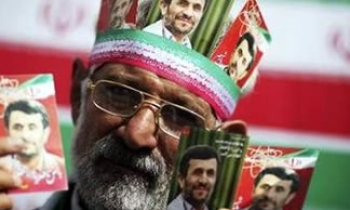NEW YORK As days pass, more and more newspapers are choosing to publish at least one of the Muhammad cartoons that are sparking violence abroad, after first appearing in Danish newspapers many months ago. Still, the number remains small.
The Wyoming Tribune-Eagle in Cheyenne, which has a tiny Muslim population, published two of the cartoons on Tuesday, including one with a bomb coming out of the head of the prophet, which appeared on the front page. The other drawing followed on A10.
Here are excerpts from the published explanation from D. Reed Eckhardt, managing editor.
*
True, these comics can be found with a simple Google search. But it still has worried me that even the nation’s biggest newspapers, usually so bold and aggressive in defending Americans’ First Amendment right to know, have declined to publish the cartoons.
And The Associated Press, which is carried by virtually all U.S. daily newspapers of size, has refused to distribute them, essentially censoring its member newspapers and their readers.
To the protestors, the controversy centers on the fact that any drawing of Muhammad is considered sacrilegious. And the idea that the cartoon that we ran on your front page as well as several others of the controversial dozen tie the prophet directly to terrorism is said to further stereotype Muslims as extremists.
OK, I understand that. Some critics of our decision will no doubt point out that it is relatively safe to publish these cartoons in Cheyenne, Wyo., where the Muslim population be described as minimal at best.
But our choice to print these drawings as well as a Web address where you can see the rest (face-of-muhammed.blogspot.com) was not about safety or about being offensive. It also was not about purposely trampling on the feelings and beliefs of those people who live here and do follow Muhammad’s teachings.
Rather, for me it simply was about the right of you, our readers, to know what this controversy is all about. It is possible to describe these cartoons all day long as have papers across the country but until you see them, you can’t really decide for yourself whether they are offensive.
And, no, not all of you have access to the Internet. Those of you who do not or cannot use computers should not be shut off from seeing what is causing this international fuss simply because you cannot get on the Web.
I have seen these Danish cartoons. They are not in bad taste; they simply state an editorial viewpoint that says Muslim extremists are way off track. Again, I have seen worse in your newspaper and in newspapers across the country since Sept. 11, 2001, including many about Muslims and Muslim terrorists.
So I guess I am confused about what is going on here, and I felt more than a few of you might be as well. Which was one more motivation to print them in your newspaper.
It is important that the American media, particularly the press, not bow to any single group when it gets its feelings hurt. Certainly your newspaper can should try to be sensitive. But it also should challenge its readers to think about their world, and that sometimes takes words and pictures that can be offensive, sometimes even repugnant.
It is my belief that more information is better than less and that grown adults can decide for themselves what is offensive and what is not....
This newspaper regularly demands that public officials be open so readers can make decisions on political issues for themselves. Now the media are going to censor cartoons that one group finds distasteful?
American editors need to stand up and say that they will not be bullied by Muslims, Christians or anyone else. Unfortunately, that has not been the message sent by U.S. newspapers so far in this dispute over the Danish cartoons.









